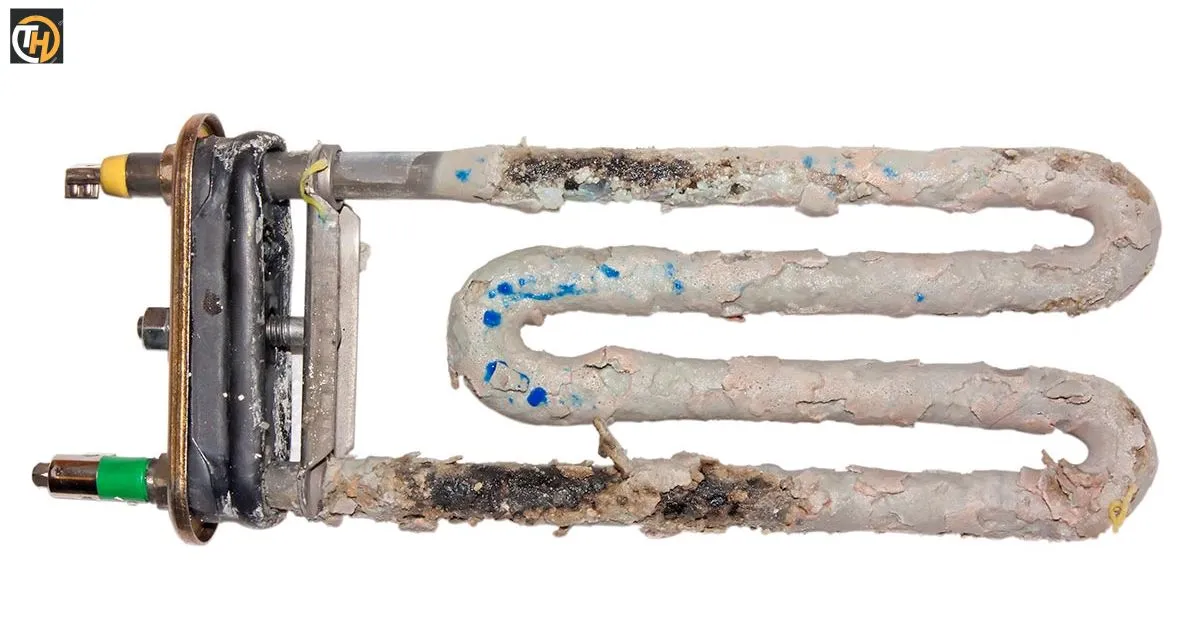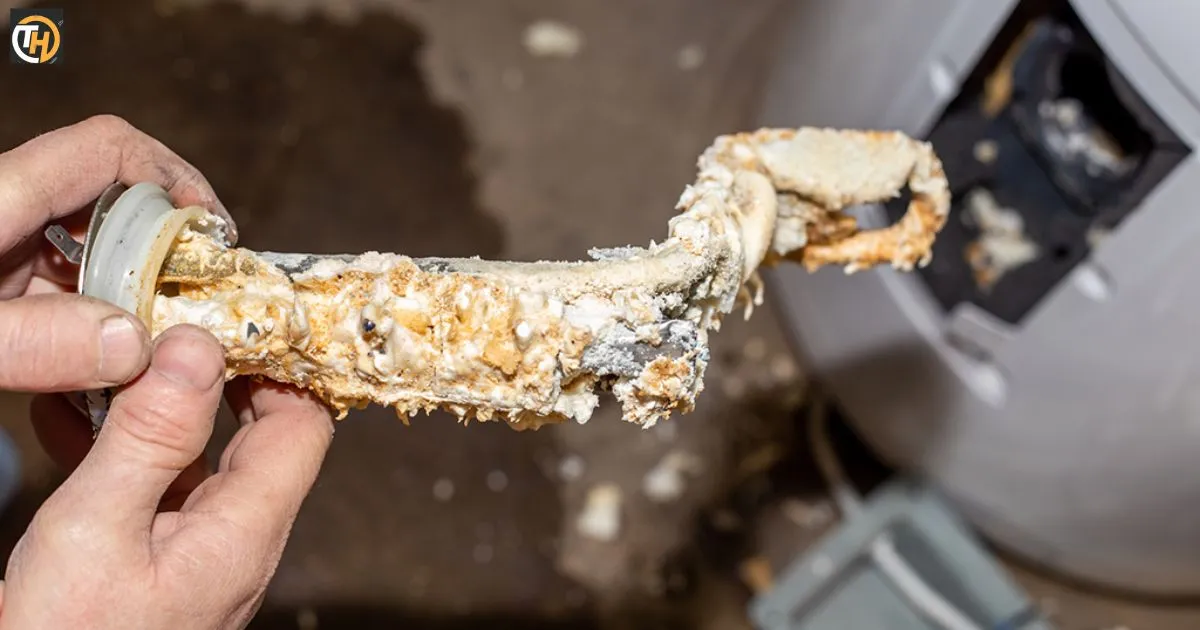Water heaters play a crucial role in our daily lives, providing warm showers and hot water for various household activities. Calcium build-up in water heaters is a common issue that can significantly affect the efficiency and lifespan of the appliance.
The presence of calcium in your water heater not only reduces its efficiency but can also lead to other problems such as clogged pipes and reduced water flow. But don’t worry! There are several methods available to remove calcium from your water heater and restore its functionality.
In this guide, we will walk you through the process of removing calcium deposits from your water heater, ensuring it operates at peak efficiency and prolongs its lifespan, Over time, these minerals precipitate out of the water and form a hard, chalky deposit on the tank’s interior surfaces.
Importance of Water Heater Maintenance
Water heaters are often overlooked until problems arise. Regular maintenance is key to ensuring their longevity and optimal performance.
- Water heaters are often overlooked until problems arise, making maintenance a neglected aspect of household care.
- Regular maintenance is not just a suggestion but a necessity, acting as a shield against potential issues that can compromise the functionality of your water heater.
- Neglecting the upkeep of your water heater can lead to a cascade of problems, including decreased efficiency, increased energy consumption, and even the premature death of this vital appliance.
Common Issue: Calcium Buildup
Calcium buildup, also known as limescale, can occur in water heaters due to the accumulation of minerals present in hard water. This can lead to various issues, including reduced heating efficiency and increased energy consumption.
Understanding Calcium Buildup
What is Calcium Buildup?
- Calcium buildup is the deposition of calcium carbonate on heating elements, forming a tenacious layer that hinders heat transfer.
- This accumulation occurs when water with high mineral content, particularly calcium and magnesium, is heated, causing these minerals to solidify and settle within the water heater.
Causes of Calcium Buildup
- The primary cause of calcium buildup is hard water, which is rich in minerals that become more prominent when heated.
- The minerals in hard water precipitate, creating stubborn deposits that accumulate over time and interfere with the optimal functioning of the water heater.
Signs of Calcium Buildup

Reduced Efficiency
- One of the initial signs of calcium buildup is a noticeable decrease in the heating efficiency of your water heater.
- This reduction in efficiency results in longer heating times, which not only inconveniences users but also contributes to higher energy bills.
Strange Noises
- As calcium deposits accumulate, the water heater may produce strange noises such as rumbling or popping.
- These sounds are indicative of the appliance working harder to overcome the insulating layer created by calcium buildup.
Slow Heating
- If your water heater takes an extended period to reach the desired temperature, calcium buildup might be impeding the effectiveness of the heating element.
- The insulating effect of the deposits causes the heating process to become slower and less efficient.
DIY Methods for Removing Calcium
Flushing the Water Heater
- Regularly flushing the water heater is a fundamental DIY method for preventing and removing sediment, including calcium deposits.
- This maintenance activity helps maintain optimal performance by preventing the buildup of deposits within the appliance.
Using Vinegar Solution
- A simple yet effective DIY solution involves using a mixture of vinegar and water to dissolve and eliminate calcium deposits.
- Flushing the water heater with this solution helps break down the hardened layer, restoring the appliance’s efficiency.
Installing a Water Softener
- For a long-term solution, consider installing a water softener, a device designed to reduce the mineral content in water.
- By addressing the root cause of calcium buildup, a water softener prevents the formation of deposits in the first place.
Professional Solutions
Hiring a Plumber
- In severe cases of calcium buildup, seeking professional help is advisable.
- Plumbers possess specialized tools and expertise to dislodge and remove stubborn calcium deposits, restoring the water heater’s efficiency.
Using Descaling Agents
- Commercial descaling agents are available for those who prefer a professional solution to tackle calcium buildup.
- However, caution is advised to avoid potential damage to the water heater, and adherence to safety instructions is crucial.
Prevention Techniques
Regular Maintenance
- Consistent and periodic maintenance is the key to preventing calcium buildup and extending the lifespan of your water heater.
- Routine flushing, visual inspections, and prompt action upon identifying early signs are essential aspects of effective maintenance.
Water Softener Installation
- Installing a water softener is a proactive measure to address the root cause of calcium buildup.
- By reducing the mineral content in the water, a water softener acts as a preventive shield against the formation of deposits in the water heater.
Impact on Appliance Lifespan
How Calcium Affects Water Heaters
- Calcium buildup not only reduces heating efficiency but can also lead to corrosion and damage to the internal components of the water heater.
- The cumulative impact of these issues can significantly shorten the lifespan of the appliance.
Importance of Proactive Measures
- Taking proactive measures, such as regular maintenance and the installation of a water softener
Environmental Considerations
Water Heater Energy Efficiency
Calcium buildup increases energy consumption, impacting the environment. Maintaining a clean system contributes to energy efficiency and reduces the carbon footprint.
Safety Precautions
Importance of Turning Off the Heater
Before attempting any maintenance, ensure the water heater is turned off to avoid accidents and injuries.
Use of Safety Gear During Maintenance
Protect yourself by wearing safety gear, such as gloves and eye protection, when dealing with cleaning agents and tools.
Common Mistakes to Avoid
Ignoring Early Signs
Addressing early signs of calcium buildup prevents more extensive damage to the water heater.
Using Harsh Chemicals
Avoid using harsh chemicals that can damage the water heater. Opt for safe and effective descaling solutions.
Neglecting Regular Checks
Regularly inspect your water heater for signs of calcium buildup and other issues to catch and address problems early.
Real-life Experiences
User Testimonials
Hear from homeowners who successfully tackled calcium buildup using DIY methods and professional assistance.
Success Stories with DIY Methods
Explore inspiring stories of individuals who effectively removed calcium deposits using simple, at-home solutions.
Best Practices for Water Heater Care
Learn the best practices recommended by experts to ensure the optimal performance and longevity of your water heater.
Expert Tips for Maintenance
Regular maintenance is key to a well-functioning water heater. Consider these expert tips to keep calcium buildup at bay:
- Check Anode Rods: Anode rods are sacrificial components that attract corrosive elements, including calcium. Regularly inspect and replace them as needed.
- Adjust Temperature: Higher temperatures can accelerate calcium buildup. Keep your water heater at a moderate temperature to reduce the risk of deposits.
- Annual Flushing: Make flushing your water heater an annual ritual. This preventative measure helps maintain efficiency and prolongs the lifespan of your appliance.
Here’s a summarized table of the key points from the article:
| Step | Action |
| 1 | Turn off power supply and examine the water heater. |
| 2 | Prepare vinegar solution, connect a hose, and drain the water. |
| Turn off the power supply and examine the water heater. | |
| Flush the system by draining the solution. | |
| 3 | After descaling, drain the remaining water from the tank. |
Drawbacks of Calcium Buildup:
| No. | Drawback |
| 1 | Reduced Efficiency |
| 2 | Increased Energy Consumption |
| 3 | Shortened Lifespan |
| 4 | Uneven Heating |
| 5 | Clogging and Blockages |
Regular maintenance and descaling are recommended to prevent these issues and ensure the longevity and efficiency of your water heater.
conclusion
Addressing calcium buildup in your water heater is crucial for maintaining efficiency and preventing potential issues. Regular examination, the use of descaling agents like vinegar, and thorough flushing of the system can help remove deposits and enhance the performance of your water heater. By taking these proactive steps, you can extend the appliance’s lifespan, reduce energy consumption, and ensure consistent water heating.
Regular maintenance not only safeguards the functionality of the water heater but also contributes to energy conservation and cost savings over time. Ultimately, incorporating these practices into your routine maintenance regimen will not only keep your water heater running smoothly but will also contribute to a more sustainable and economical use of energy resources in your household.











